GPS Timing
Tue, 05/25/2010 peter
Introduction
It has been clear since the inception of the ASSA Radio Astronomy group, that a reliable method (or several) to synchronise observing activities between members at remote observing sites would be required. This requirement actually preceded the formation of the RA group when work being done by the ASSA Occultation group needed precise timing of first and final contacts while observing the same event from several different sites. Many early methods were attempted and some succeeded, one of which will (eventually) be presented here. The aim of this project is to have at least one reliable method of time/frequency synchronisation available to ASSA members, should their activities require it.
With the prospect of the development of a long baseline radio interferometer , a solution to the problem needs to be determined and implemented.
Primary design goals
Time differences between two locations with respect to a distant object is a simple calculation of trigonometry. The problem is one of synchronisation to local clocks which are often used as references. Civil time is based on a coarse division of sections of longitude across the planet into time zones. The assumption for each zone is that the time at all points within the area is the same.
In the late twentieth century, both the USA (GPS) and the USSR (GLONASS) developed space based global positioning systems for their precision guided munitions systems and other military infrastructure. This also created an opportunity to simplify coordinated universal time (UTC) dissemination around the globe. As electronics advanced and miniaturised, low cost receivers became commercially available to allow anyone to accurately determine their location, anywhere on the globe. When selective availability on GPS was disabled in May 2000, positional accuracy of ±3 metres and timing accuracy of ±10ns was a common benchmark goal for receivers designed as timing/frequency references. Only some of the thousands of different models available today are capable of attaining this specification. Never the less, UTC dissemination by satellite systems is probably the most accessible method of accurately synchronising activities at remote locations on the ground.
Trimble ThunderBolt GPS Disciplined Clock
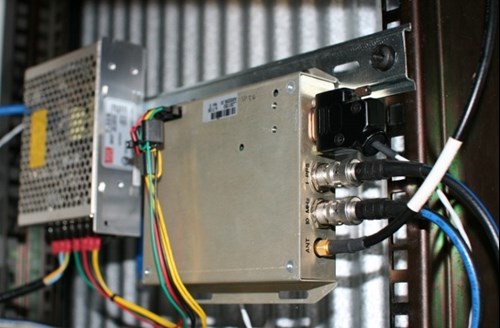
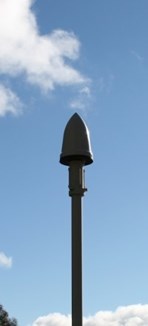
A commercial GPS receiver with disciplined oven controlled crystal oscillator. Designed as a master clock for CDMA base stations, the Thunderbolt is a compact and accurate solution available as used items from several international eBay stores, having been removed from wireless telephone installations.
Useful for phase locking local oscillators in radio interferometers, determining accurate position fixes, GPS time and UTC time.
Three outputs provide the basic requirements for time and frequency synchronisation.
- Trimble Standard Interface Code binary protocol via RS-232 interface.
Tboltmon.exe is Trimble's free software to control the ThunderBolt and available here
Lady Heather's Disciplined Oscillator program is a free alternate to the Trimble software and available here
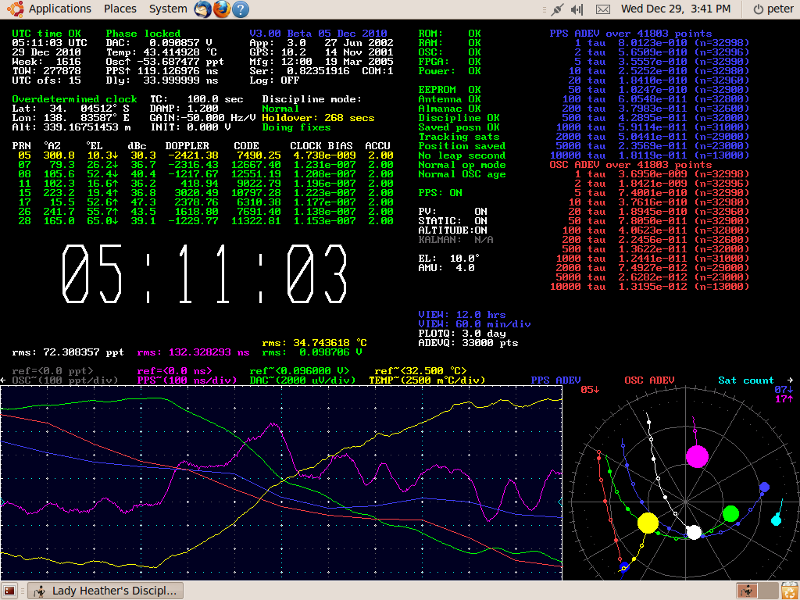
Basic Lady Heather's display
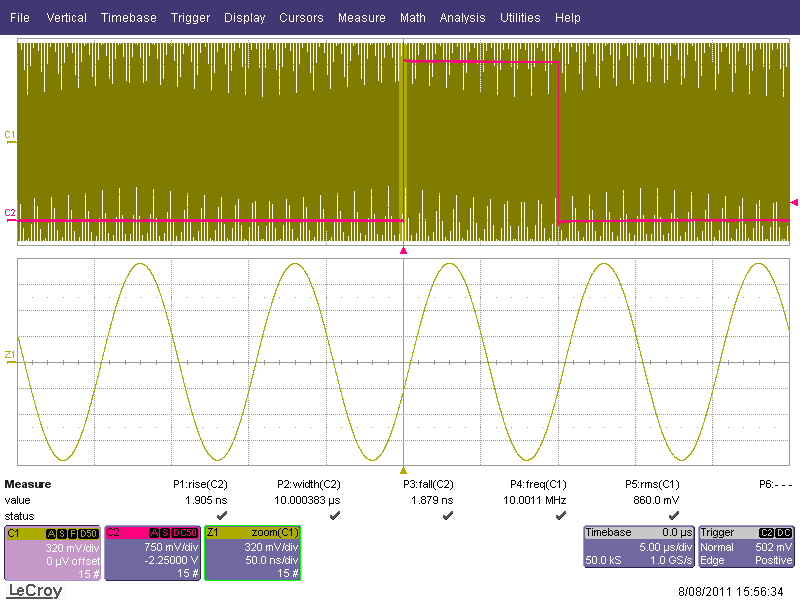
1 pulse per second, 10μs wide, TTL output via 50Ω BNC. Uncertainty : UTC ±20ns
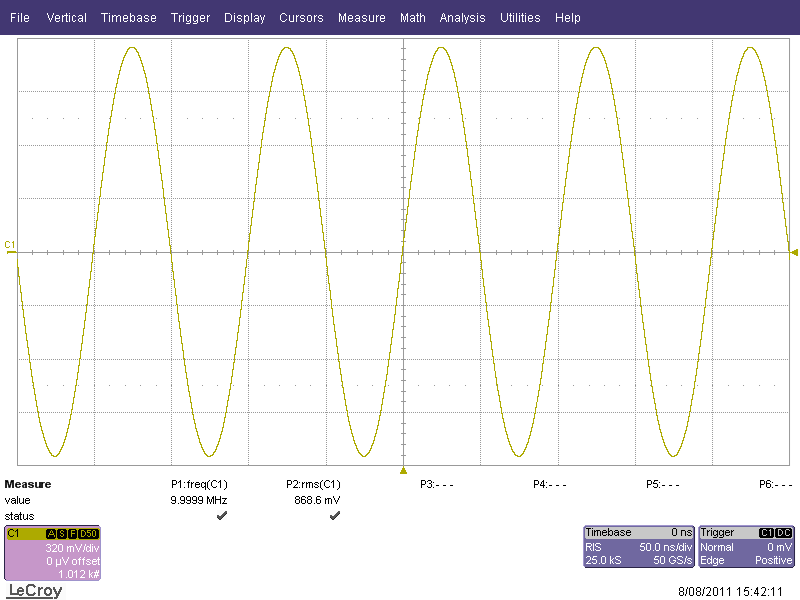
10MHz, 12.5dBm sinewave via 50Ω BNC. 24 hour averaged Uncertainty : 1.2x10E-12
The phase noise of the 10MHz sinewave output is largely dependent on the quality of the power supply used to drive it. Careful choice of the power supply will ultimately determine it's phase noise performance. Some additional and useful information can be found here
Trimble ThunderBolt will work with the usual collection of +25dB gain active antennas available locally but are designed to work with the +40dB gain Trimble bullet antenna.
Pros
- time-receiver autonomous integrity monitor
- sub microsecond 1pps timing accuracy
- sub parts per billion frequency accuracy
- low phase noise frequency output
- cheap to buy - approx A$170
Cons
- 8 channel GPS receiver
- slow to obtain accurate position/time fix
- complex multiple rail power supply required
- trimble standard interface protocol only
- medium to high gain antenna required
Garmin GPS 18x
A commercial GPS receiver with integral antenna and small size. Designed for mobile applications using a single 5 volt power supply, the Garmin GPS18x is listed here because it is compatible with the KIWI OSD, a video time inserter used to time stamp individual video frames when recording astronomical occultations. While KIWI OSD production is currently in recession, there is a google site here, inserted to help restore interest in the product.
The seismic people also use the Garmin GPS18x units for timing on their 'Larry cards'
Useful for accurate position and time.
Two outputs provide the basic requirements for time synchronisation.
- NMEA Standard Interface Code binary protocol via RS-232 interface.
- VisualGPS is free software to control the Garmin GPS 18x and available here
- 1 pulse per second, 100ms wide, TTL output via RS-232 interface. Uncertainty : UTC ±1μs
Pros
- time-receiver autonomous integrity monitor
- microsecond 1pps timing accuracy
- single rail power supply
- NMEA 0183 sentence protocol
Cons
- 12 channel GPS receiver
- timing synchronisation only
- 5 pin DIN connection to KIWI OSD required
2018
The introduction of small micro computers like the Raspberry Pi has led to the development of small very affordable 'time servers'
David Taylor from Edinburgh (Scotland) has a write up on building an NTP time server on a Raspberry Pi, from which we've successfully built several units.
There will be write up on the Raspberry Pi NTP Server under the 'Technical Special Activity Kollective' pages some time.